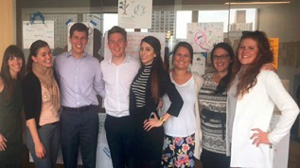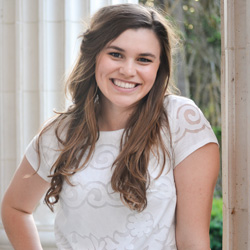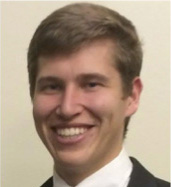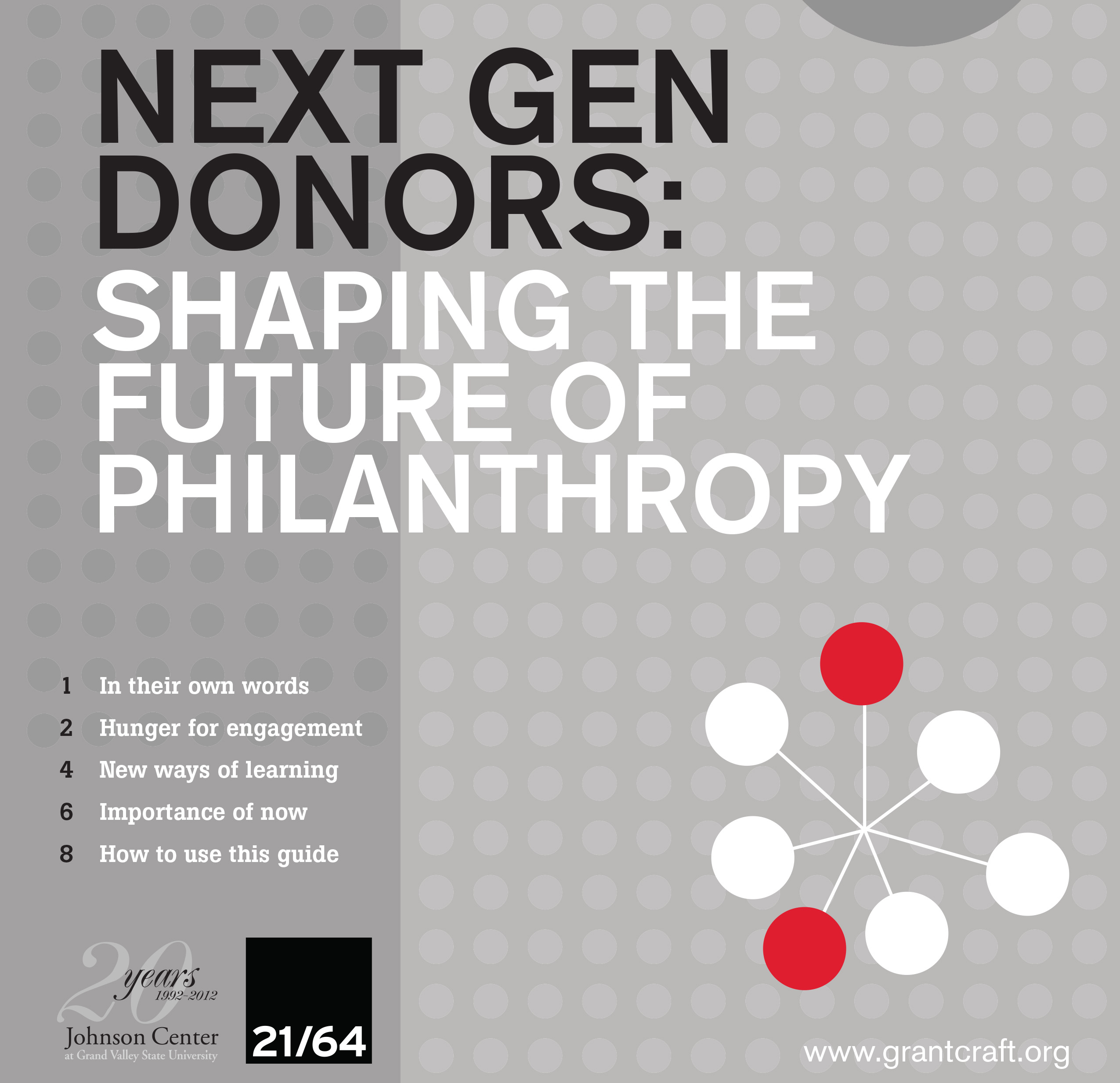Up and Coming: An Inside Look at a Next Generation Experience in Family Philanthropy
It was 1 a.m. and six college students were crammed into a small hotel bedroom in New York City— but we weren’t wrapping up a night on the town. Crouched around computers, we were putting the finishing touches on our first presentation together, which would be given to the entire Andrus Family Fund (AFF) board. The atmosphere was generally light – we were having a blast hanging out with cousins – but we felt the weight of the following day, too. Our presentation would directly impact the allocation of $25,000. We were also proud to be engaged so meaningfully in our family’s philanthropy.
AFF launched fifteen years ago as an offshoot of the Surdna Foundation to engage members of the extended Andrus family in philanthropy. BETs, the Board Experiential Training program, was designed to introduce 18-24 year-olds to philanthropy by building awareness of social justice issues for future board members. Both AFF and BETs emphasize “sharing power to build a culture of learning.” This sharing manifests itself in the communication that AFF establishes with organizations and communities to ensure that vulnerable populations have a voice. The culture of learning is essential for AFF’s and BETs’ funding goals, which focus on issues of social justice related to foster care and justice system-involved youth.
 Our training with BETs focused on (1) learning about social justice and its implications for philanthropy; and (2) applying that knowledge in a supportive learning-focused environment. Though our BETs cohort was all family, many of us had never met and we came from five states. When we first connected one year ago in New York, we received an orientation to the program, learning that our task over the following twelve months would be to go through the grantmaking process like board members. Our two facilitators noted that AFF was shifting their language and focus to further incorporate awareness of inequity in the grantmaking process. As a result, our learning about the practical implementation of grantmaking would be grounded in social justice. Most importantly during that first meeting, we learned about each other. We were all in different phases in college, with a range of majors spanning interior design to chemical engineering, and we all had different hobbies and career aspirations. We are family, yet we have different backgrounds. Moreover, we were tasked with connecting with and funding communities around the country that most of us hadn’t personally experienced. It was important to realize our differences early on so we could effectively collaborate and eventually make cohesive decisions.
Our training with BETs focused on (1) learning about social justice and its implications for philanthropy; and (2) applying that knowledge in a supportive learning-focused environment. Though our BETs cohort was all family, many of us had never met and we came from five states. When we first connected one year ago in New York, we received an orientation to the program, learning that our task over the following twelve months would be to go through the grantmaking process like board members. Our two facilitators noted that AFF was shifting their language and focus to further incorporate awareness of inequity in the grantmaking process. As a result, our learning about the practical implementation of grantmaking would be grounded in social justice. Most importantly during that first meeting, we learned about each other. We were all in different phases in college, with a range of majors spanning interior design to chemical engineering, and we all had different hobbies and career aspirations. We are family, yet we have different backgrounds. Moreover, we were tasked with connecting with and funding communities around the country that most of us hadn’t personally experienced. It was important to realize our differences early on so we could effectively collaborate and eventually make cohesive decisions.
During the following twelve months, we used virtual tools to communicate and collaborate with BETs members and mentors across the U.S. After working through the occasional video-chat snafu, we learned as a group during thematic monthly meetings through spirited discussions of outside readings. For example, after reading Beverly Tatum’s “Why Are All the Black Kids Sitting Together in the Cafeteria,” we each shared our earliest memories of social messaging around race and identity and how these messages stayed with us throughout our lives. In that same conversation, our mentors asked us to close our eyes and imagine the board of a major philanthropy: what did the board members look like? (Stop reading for a second…you should try it too! What do you imagine those board members to look like?)
Many of us imagined a board made up of predominantly older white men, which forced us to interrogate our assumptions about what philanthropy is and who participates in it. In learning about social justice, we explored issues of identity, intersectionality, privilege, and power. Our philanthropy learning focused on the history and evolution of philanthropy, power dynamics in grantmaking, and the balance of strategic and socially just aims. As we built our theoretical base, we also discussed its application to “real world” examples through case study scenarios, such as analyzing a fictional foundation board’s proposal to contract with a university to conduct research about to “maximize impact” of funds in a community. Given this situation, we considered potential conflicts of interest, asked about the individual involvement of the affected community in the research, and wondered whether the cost-benefit analysis might be better generated through a process that engaged and empowered those who had a stake in the issue the fictional foundation sought to address. Further, we began to examine the nuance of the very notion of maximizing impact. In response to each case study scenario, each BETs member wrote responses for the others to reflect on before meeting. These exercises were foundational in understanding how we operated as a board because we often had varied opinions with equally valid intentions. For instance what metrics should be used to quantify impacts, and what role should these numbers play in issues so difficult to measure? It was fascinating to have these conversations, and made us wonder how often professional grantmakers get to do the same.
 Four months into BETs, we began drafting a statement of purpose to clarify our mission as a group. The following month, we used the statement of purpose as a jumping off point to write a request for proposals (RFP). This writing process was a stark transition from our learning modules. It was the first time that we organized our thoughts as a group, and it was a powerful experience. After having read so many different statements of purpose, we had a sense of what we wanted write, but it was a true challenge to craft language that clearly conveyed our message to potential applicants. (We’ll never read a mission statement the same again!) Writing together helped us forge a group identity, which served as a guide for the rest of our grantmaking process.
Four months into BETs, we began drafting a statement of purpose to clarify our mission as a group. The following month, we used the statement of purpose as a jumping off point to write a request for proposals (RFP). This writing process was a stark transition from our learning modules. It was the first time that we organized our thoughts as a group, and it was a powerful experience. After having read so many different statements of purpose, we had a sense of what we wanted write, but it was a true challenge to craft language that clearly conveyed our message to potential applicants. (We’ll never read a mission statement the same again!) Writing together helped us forge a group identity, which served as a guide for the rest of our grantmaking process.
We outlined our funding focus: “to support organizations that can efficiently contribute to the amelioration of inequities for our most vulnerable young people,” and our approach: “we are dedicated to forging connections with potential grantees to encourage collaboration and an ongoing relationship.” After finalizing the RFP, we sent it to five organizations AFF staff selected based on their existing funding relationship with AFF and fit with BETs’ funding focus.
In an effort to counteract the inherent power imbalance between grantmakers and potential grantees, we prioritized open communication with the organizations. Not only was this fair, but it also afforded us an understanding of the grantmaker-grantee relationship in a way that is impossible to glean through paper proposals alone. We did this by assigning individual BETs liaisons for each organization that submitted a proposal. For most of us, this meant a phone call or email exchange with the organization to learn its values and culture. Our communication process had some unforeseen challenges. One BETs member had to weigh the pros and cons of accepting an invitation to a potential grantee-hosted event that would take place before a funding decision had been reached. While it would be an exciting personal opportunity, it might generate undue expectations for the grantee—and it was a level of access that other organizations wouldn’t get. After discussing it as a group, we decided that declining the invitation, while difficult, would be most in line with social justice principles.
Through our communications and the funding requests received, we evaluated each of the five proposals using a specific set of criteria: the project’s alignment with social justice, the AFF values, our BETs statement of purpose, the coherence and effects of their budget, and our overall impression. After evaluating the proposals individually, we met (virtually) several times as a group to discuss our views. This was followed by an anonymous vote to determine the two organizations that we would recommend to the AFF board to receive funding. We each knew that the other group members would approach the conversation with respect and consideration for others’ perspectives. It was evident that we were confident and in-sync with our funding decision, as the anonymous poll resulted in a unanimous vote.
Finally, exactly one year after we first met as a group, we reconvened in New York to present our recommendations and our learning experience with BETs to the AFF board. After a day of reflection and the late night of preparation, we found ourselves in front of the AFF board and staff: 15 experienced grantmakers and professionals. Though we were nervous and a little intimidated, we knew the board wanted to see us succeed. During our presentation, we prefaced our funding recommendation with an explanation of our learning, trying to engage the board members as if they were experiencing BETs themselves. From using an online polling platform to get audience responses in real-time to roleplaying a case study conversation, we did more than just present; we asked the board to consider ideas of individual bias, the transition from traditional philanthropy, and the intersectionalities of identity. Even though we are relatively inexperienced, a social justice approach meant the board was willing to listen to, and even learn from, us as BETs members. It was invigorating and intensified our eagerness for engaging in philanthropy.
Participating in BETs challenged each of us to grow personally and intellectually, both as philanthropists and as agents of social change. This meant understanding ourselves as members of a long-term team, learning the intricacies of intersectionality and the obligation to use areas of privilege in our lives to effect change, not shying away from issues of social justice in our own communities, and forging relationships with distant family members in a meaningful and productive setting. Even now, months later, we still send out a group text when we come across a relevant article or podcast, or even when we’re just thinking about the group.
Going forward, the BETs model continues to evolve to better represent AFF and to better prepare young family members for philanthropic involvement with AFF and in their lives more generally. There are many approaches to engaging family members and the next generation in philanthropy. BETs is just one approach, but in our experience, it works.



